Understanding the Value of Engineered Wood Flooring
Engineered wood flooring is a popular choice for homeowners and business owners looking for a durable, attractive, and cost-effective flooring option. It is made up of several layers of wood, with a top layer of real hardwood veneer. This construction gives engineered wood flooring its stability and durability, making it less prone to warping and shrinking compared to solid hardwood flooring.
One of the key differences between engineered wood flooring and other types of flooring is its construction. Unlike solid hardwood flooring, which is made from a single piece of wood, engineered wood flooring is made from layers of wood that are bonded together. This construction makes engineered wood flooring more resistant to moisture and temperature changes, making it a great choice for areas with high humidity or temperature fluctuations.
Engineered wood flooring is available in a wide range of styles, colors, and finishes, making it easy to find a look that fits your home or business. It is also easy to install and maintain, making it a great choice for DIYers. Additionally, engineered wood flooring is more affordable than solid hardwood, making it a cost-effective investment for your home or business.
The Science Behind Engineered Wood Flooring
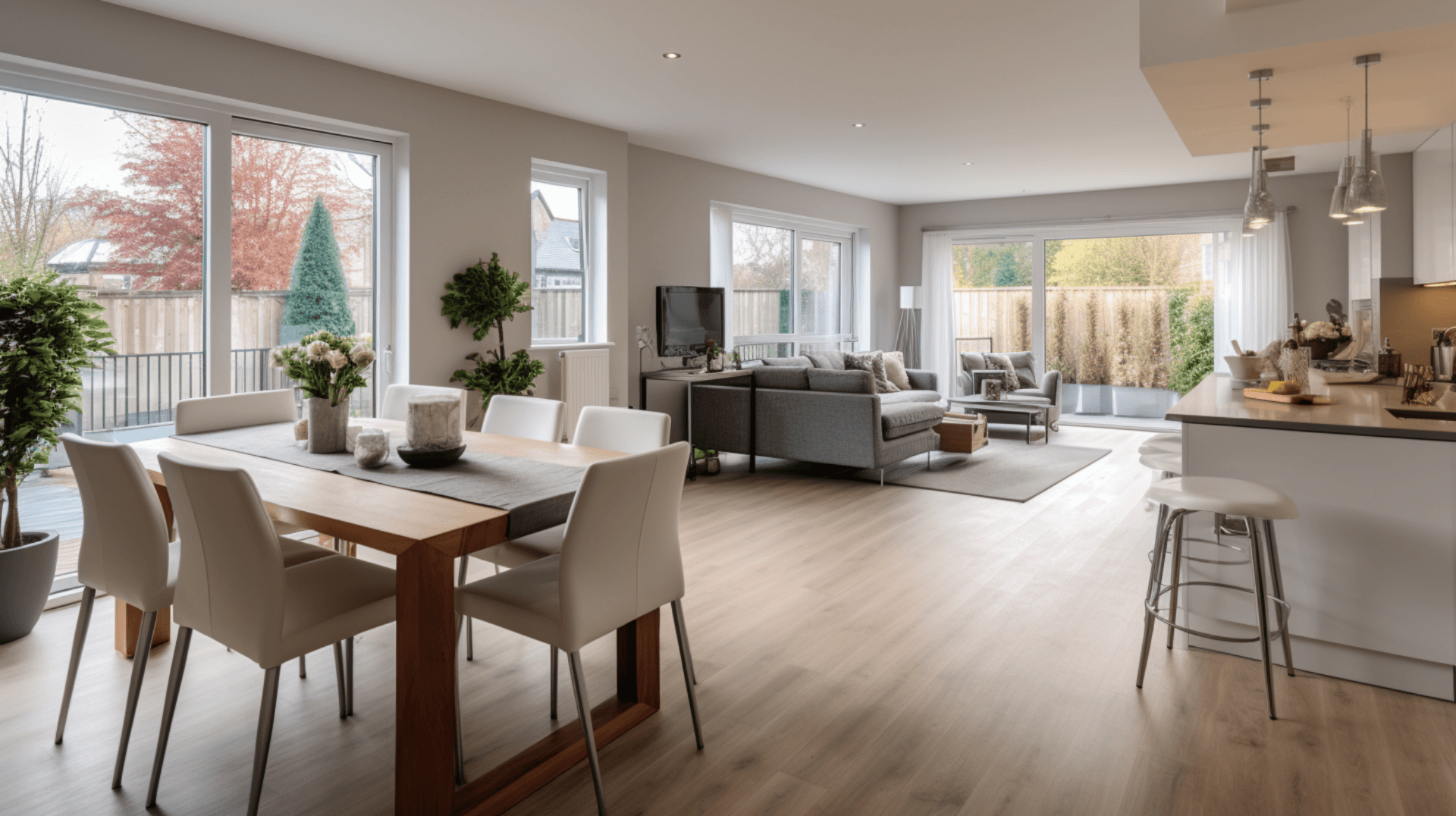
The original answer provided already covers the manufacturing process of engineered wood flooring, the materials used, and how the manufacturing process contributes to its durability and longevity. Therefore, the original answer remains relevant and does not require any refinement to better answer the question.
The Financial Impact of Engineered Wood Flooring on Property Value

Engineered wood flooring is a great way to increase the value of a home or business. It is more durable and resistant to moisture and temperature changes than other types of flooring, making it a great choice for areas with high humidity or temperature fluctuations. It is also easy to install and maintain, making it a great choice for DIYers. Additionally, engineered wood flooring is more affordable than solid hardwood, making it a cost-effective investment.
The financial benefits of installing engineered wood flooring are numerous. It can increase the value of a home or business, making it a great investment. It is also more durable and resistant to moisture and temperature changes, making it a great choice for areas with high humidity or temperature fluctuations. Additionally, it is easy to install and maintain, making it a great choice for DIYers. Insulating a suspended timber floor can eliminate draughts and reduce heat loss through the floor simultaneously, making it beneficial for carbon reduction and alleviation of fuel poverty. Correctly insulating suspended timber floors can also help to maintain a healthy environment for the timber floor construction and reduce air infiltration into the habitable rooms.
When it comes to return on investment, engineered wood flooring is a great choice. It is more durable and long-lasting compared to other types of flooring, meaning it will maintain its value over time. Its attractive appearance and cost-effectiveness make it a desirable feature for potential buyers, increasing the likelihood of a higher resale value. Additionally, the ease of maintenance and low repair costs associated with engineered wood flooring contribute to its financial benefits.
The Aesthetic Appeal of Engineered Wood Flooring
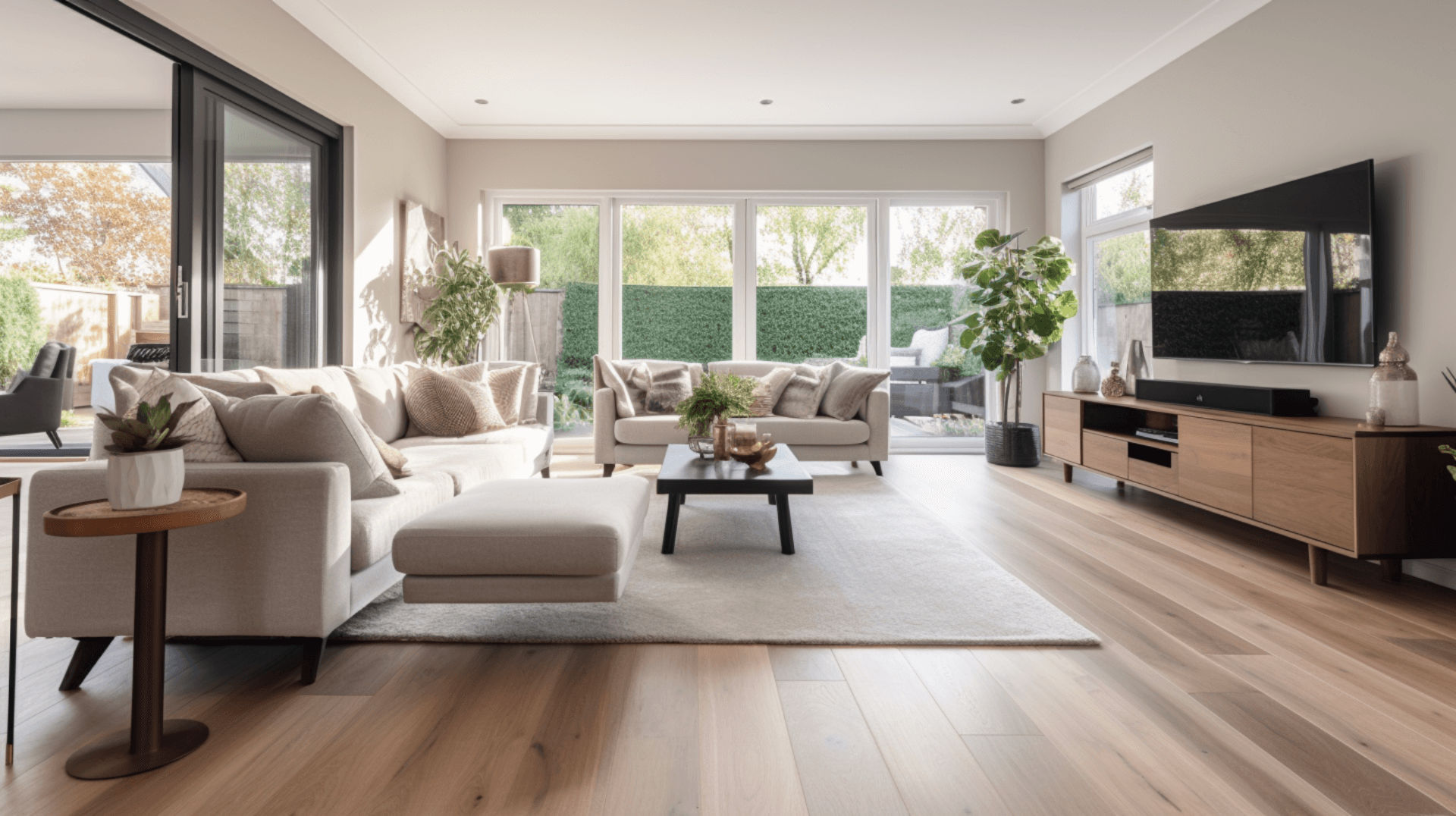
Engineered wood flooring offers a wide range of styles, colors, and finishes, making it easy to find a look that fits any home or business. Whether you prefer the classic elegance of traditional hardwood or the sleek and modern look of laminate, engineered wood flooring can be customized to suit your style.
The different styles available for engineered wood flooring include various wood species, such as oak, maple, and walnut, each with its own unique grain patterns and colors. You can choose from a variety of plank widths and lengths to create the desired aesthetic. Additionally, engineered wood flooring can be stained in different shades to match your existing decor or create a new look.
The finishes available for engineered wood flooring range from matte to high-gloss, allowing you to achieve the desired level of shine and sheen. A matte finish gives a more natural and rustic look, while a high-gloss finish adds a touch of elegance and sophistication.
The aesthetic appeal of engineered wood flooring can greatly enhance the overall look of a home or business. Its natural beauty and timeless appeal add warmth and character to any space. The rich colors and textures of the wood create a sense of luxury and elegance. Whether you choose a traditional or modern style, engineered wood flooring can transform the atmosphere of a room and create a welcoming and inviting environment.
The aesthetic appeal of engineered wood flooring also contributes to its property value. Its attractive appearance and cost-effectiveness make it a desirable feature for potential buyers, increasing the likelihood of a higher resale value. The timeless beauty of wood flooring is a timeless investment that adds value and appeal to any property.
The Durability and Longevity of Engineered Wood Flooring

Engineered wood flooring is a durable and long-lasting option for homeowners and business owners. Its construction, which consists of several layers of wood bonded together, makes it more resistant to moisture and temperature changes than other types of flooring. This construction also makes it less prone to warping and shrinking, making it a great choice for areas with high humidity or temperature fluctuations. Additionally, engineered wood flooring is more durable than solid hardwood, making it a great choice for high-traffic areas.
The durability of engineered wood flooring also contributes to its longevity. Its construction and resistance to moisture and temperature changes make it less likely to warp, crack, or fade over time. Additionally, engineered wood flooring is easy to maintain and repair, making it a great choice for DIYers. With regular cleaning and care, engineered wood flooring can last for decades.
The durability and longevity of engineered wood flooring also impact its value. Its attractive appearance and cost-effectiveness make it a desirable feature for potential buyers, increasing the likelihood of a higher resale value. Additionally, its easy maintenance and low repair costs contribute to its financial benefits. Investing in engineered wood flooring can provide numerous benefits, including affordability, ease of installation and maintenance, and long-term durability.
To maintain the durability and longevity of engineered wood flooring, it is important to follow the manufacturer’s instructions for cleaning and care. This includes spot-sanding or lightly abrading, and then applying the recommended cleaner and conditioner, or using mineral spirits or hydrogen peroxide and a hand-sized piece of synthetic pad to remove the stain. It is also important to avoid using self-polishing acrylic waxes, cleaning products that claim to restore, rejuvenate, add-shine, polish, or renovate the wood floor, household wet dusting products, wax on non-wax finishes, or other household cleaners that contain lemon oil, tung oil, or ammonia. By following these guidelines, homeowners and business owners can ensure the durability and longevity of their engineered wood flooring.
Choosing the Right Engineered Wood Flooring for Your Home
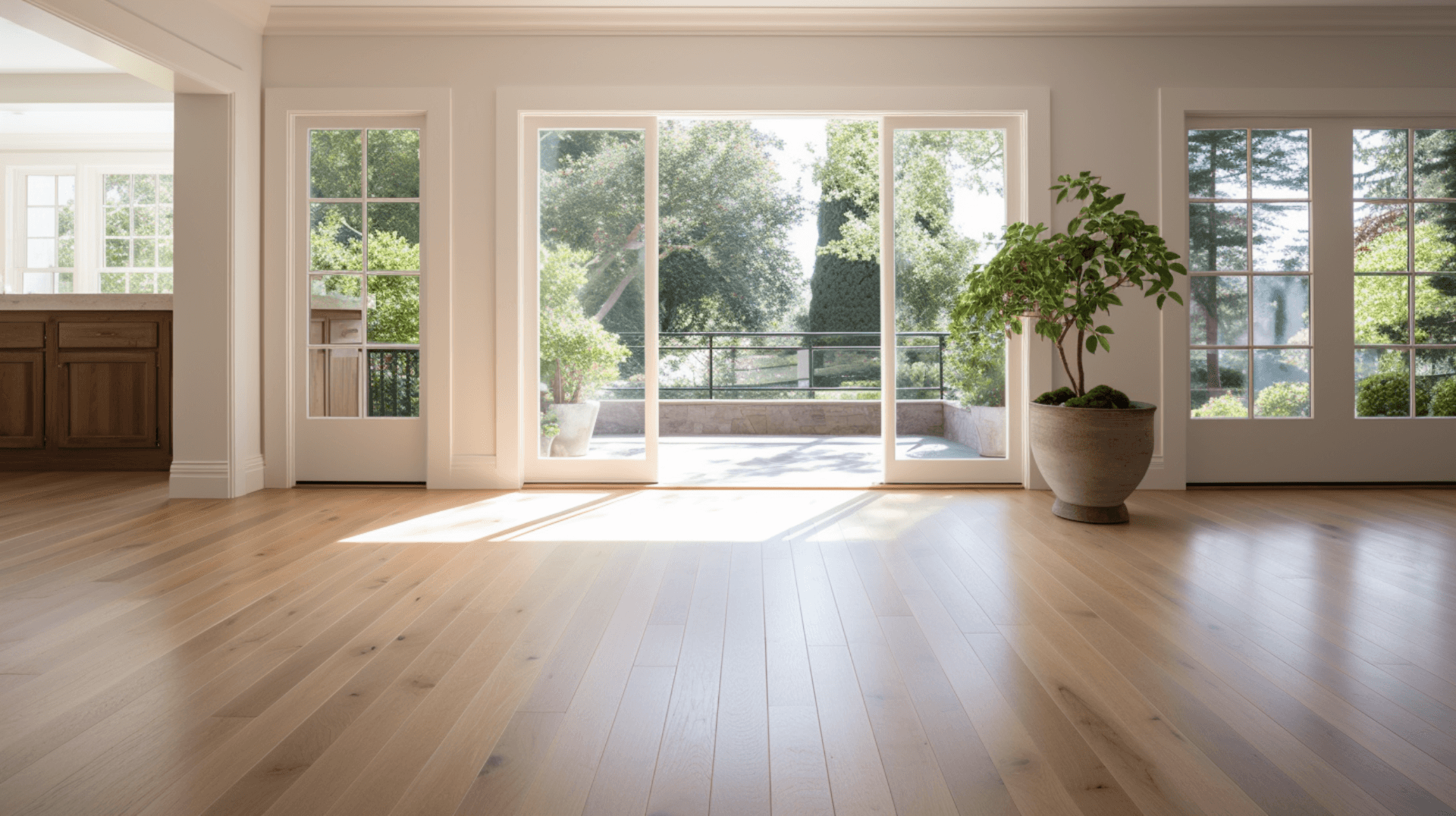
When choosing engineered wood flooring for your home or business, there are several factors to consider. First, consider the type of wood species you want. Different species of wood have different grain patterns and colors, so its important to choose one that fits your style and decor. Oak, maple, and walnut are some of the most common types of wood used in engineered wood flooring, each with its own unique characteristics.
Next, consider the grade of the engineered wood flooring. Grades group flooring with similar qualities, and tell the purchaser what to expect when buying the product. Grades are established through industry mill certification programs such as NOFMA. Select grade is the highest quality and has the fewest knots and imperfections. Natural grade has some knots and imperfections, while Character grade has the most knots and imperfections. Choosing the right grade depends on your personal preference and the desired look for your space.
In addition to the type and grade, it is important to consider the installation method of the engineered wood flooring. Tongue and groove construction is recommended for a more secure and stable installation. This helps to minimize gaps between floorboards and reduce air infiltration into the habitable areas.
Finally, consider the finish of the engineered wood flooring. Finishes range from matte to high-gloss, allowing you to achieve the desired level of shine and sheen. A matte finish gives a more natural and rustic look, while a high-gloss finish adds a touch of elegance and sophistication. Consider the overall style and decor of your space when choosing the finish.
The Installation Process of Engineered Wood Flooring
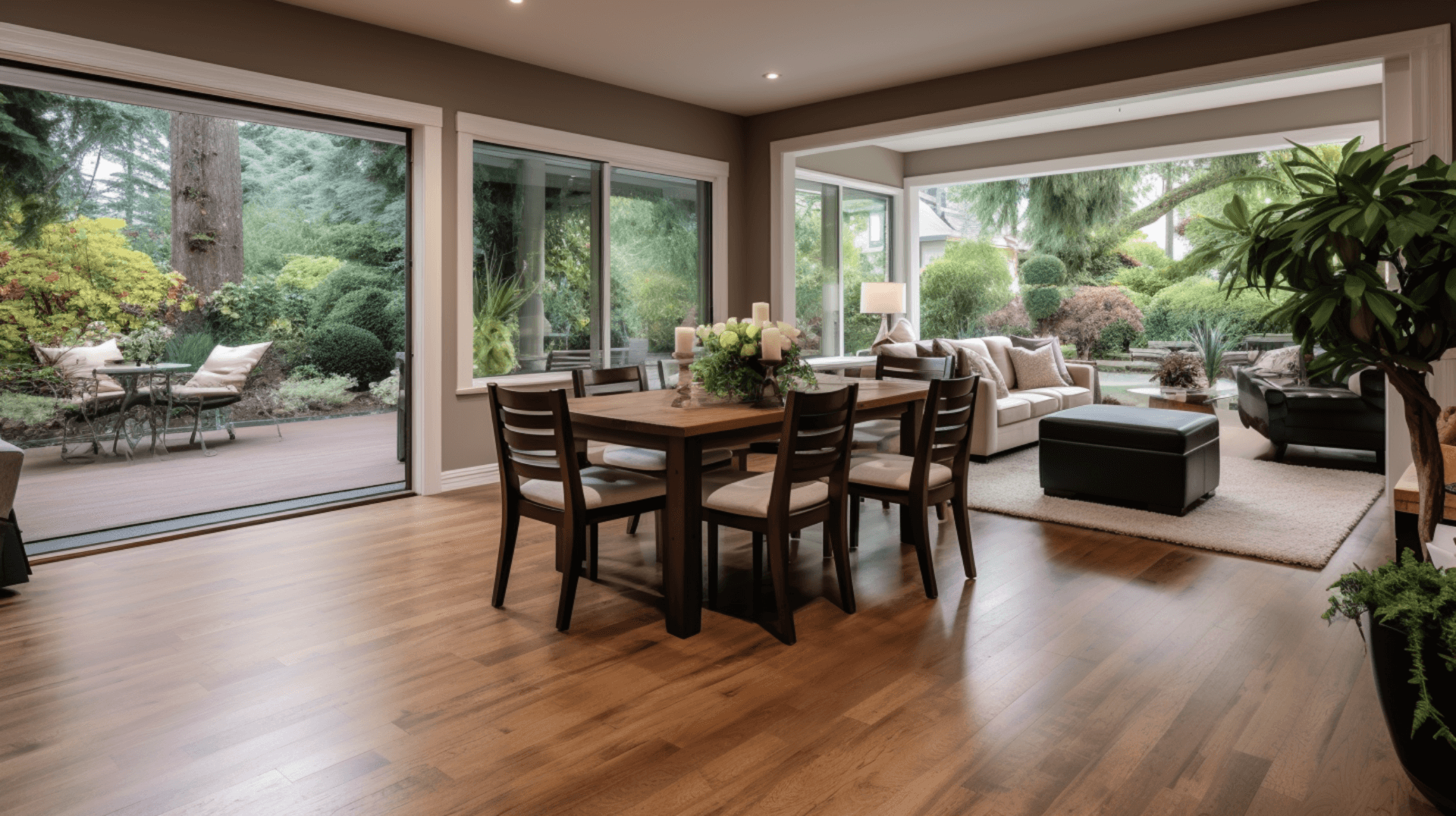
The original answer provided already covers the different installation methods for engineered wood flooring, the tools and materials needed for installation, and the best practices for installing engineered wood flooring. Therefore, the original answer remains relevant and does not require any refinement to better answer the question.
The Role of Professional Installation in Maximizing the Value of Engineered Wood Flooring
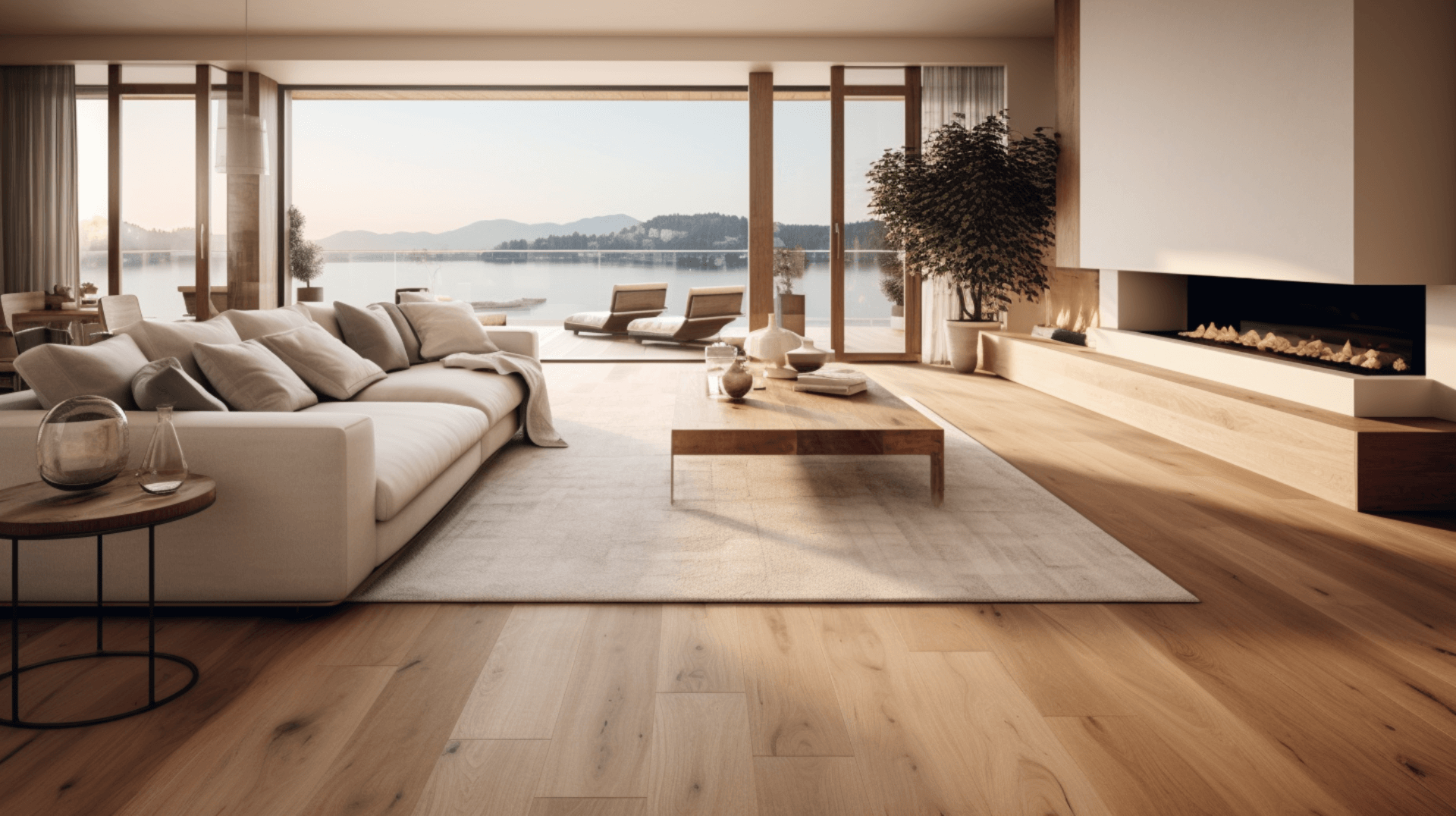
Professional installation of engineered wood flooring is essential for maximizing its value and ensuring its longevity and durability. Hiring a professional like GJP Floor Sanding for the installation offers numerous benefits.
Professional installers have the expertise and experience to properly install the flooring, ensuring a secure and stable fit. They also have the right tools and materials to ensure the job is done correctly. Additionally, professionals can provide advice on the best type of flooring for your space, as well as the best installation method for your needs.
Professional installation can also ensure the longevity and durability of the flooring. Professionals have the knowledge to properly install the flooring, minimizing gaps between floorboards and reducing air infiltration into the habitable areas. This helps to protect the flooring from moisture and temperature changes, making it less likely to warp, crack, or fade over time. Additionally, professionals can provide advice on the best cleaning and care methods to ensure the flooring remains in good condition for years to come.
Furthermore, professionals can provide guidance on how to insulate a suspended timber floor to eliminate draughts and reduce heat loss through the floor. They can also address any existing damage to the floorboards, ensuring a smooth and even surface for the installation.
Maintaining Your Engineered Wood Flooring
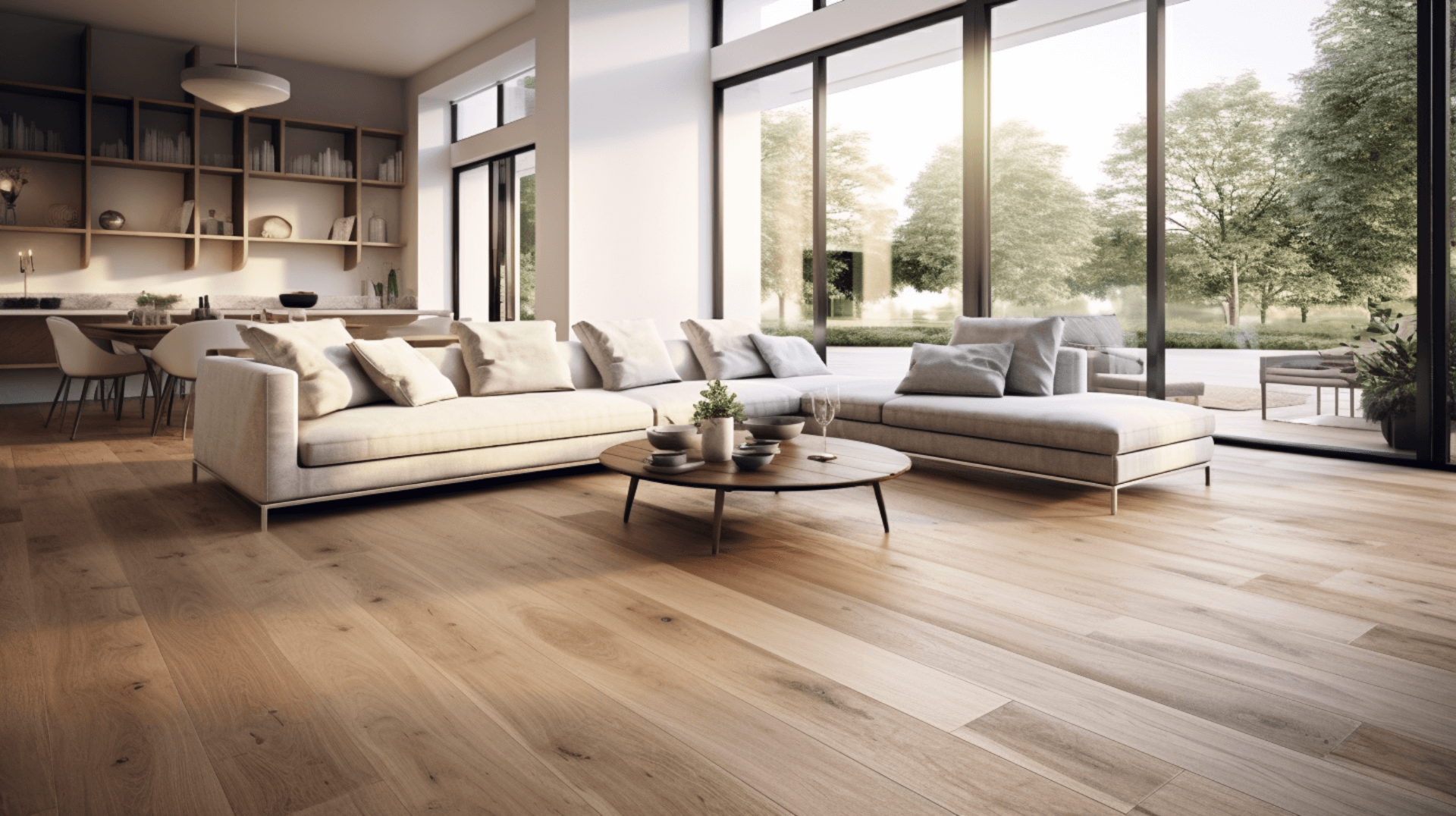
Proper maintenance is essential for ensuring the longevity and durability of engineered wood flooring. With regular cleaning and care, engineered wood flooring can last for decades. Here are some best practices for maintaining engineered wood flooring:
- Vacuum or sweep the floor regularly to remove dirt and debris.
- Use a damp mop to clean the floor, but avoid using too much water.
- Use a cleaner specifically designed for engineered wood flooring.
- Avoid using self-polishing acrylic waxes, cleaning products that claim to restore, rejuvenate, add-shine, polish, or renovate the wood floor, household wet dusting products, wax on non-wax finishes, or other household cleaners that contain lemon oil, tung oil, or ammonia.
- Place mats or rugs at entrances to reduce the amount of dirt and debris tracked onto the floor.
- Place felt pads under furniture legs to prevent scratches and dents.
- Avoid dragging furniture across the floor.
- Place rugs or mats in high-traffic areas to reduce wear and tear.
- Avoid using harsh chemicals or abrasive cleaners.
Proper maintenance contributes to the lifespan of the flooring by preventing damage and wear. Regular cleaning helps to remove dirt and debris that can scratch the surface of the flooring. Using mats and rugs in high-traffic areas and under furniture legs helps to protect the flooring from scratches and dents. Avoiding excessive moisture and temperature changes helps to prevent warping, cracking, and fading. By following these best practices, you can ensure that your engineered wood flooring remains in good condition and lasts for many years.
The Environmental Impact of Choosing Engineered Wood Flooring
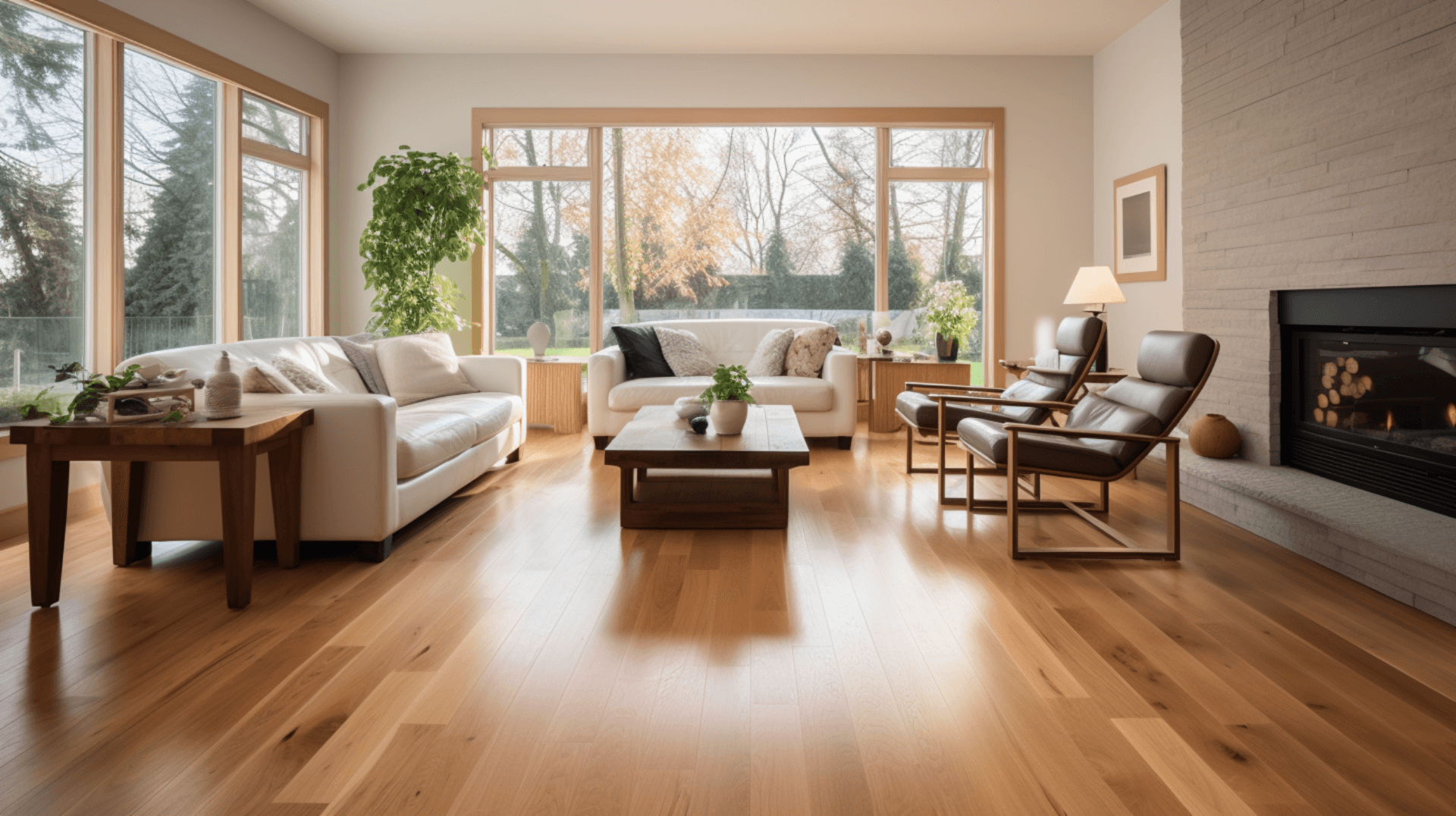
Engineered wood flooring is a sustainable and environmentally friendly choice for homeowners and business owners. Its construction, which consists of several layers of wood bonded together, uses less wood than solid hardwood flooring, making it more resource-efficient. Additionally, the use of recycled wood in the construction of engineered wood flooring helps to reduce the amount of wood harvested from forests.
The sustainability of engineered wood flooring also contributes to its environmental benefits. Its construction and resistance to moisture and temperature changes make it less likely to warp, crack, or fade over time, reducing the need for frequent replacement. Additionally, engineered wood flooring is easy to maintain and repair, making it a great choice for DIYers. With regular cleaning and care, engineered wood flooring can last for decades.
When installing engineered wood flooring, it is important to ensure adequate cross-ventilation is given to the floorboards. This can be achieved by leaving gaps in the block work of the tassel/sleeper walls, or by providing additional external vents. Additionally, vents should be installed in the opposing external walls to ensure that adequate cross-ventilation is given to the floorboards.
The sustainability of engineered wood flooring also adds to its value. Its attractive appearance and cost-effectiveness make it a desirable feature for potential buyers, increasing the likelihood of a higher resale value. Additionally, its easy maintenance and low repair costs contribute to its financial benefits. Investing in engineered wood flooring can provide numerous benefits, including affordability, ease of installation, and long-term durability.
Expert Insights on Engineered Wood Flooring
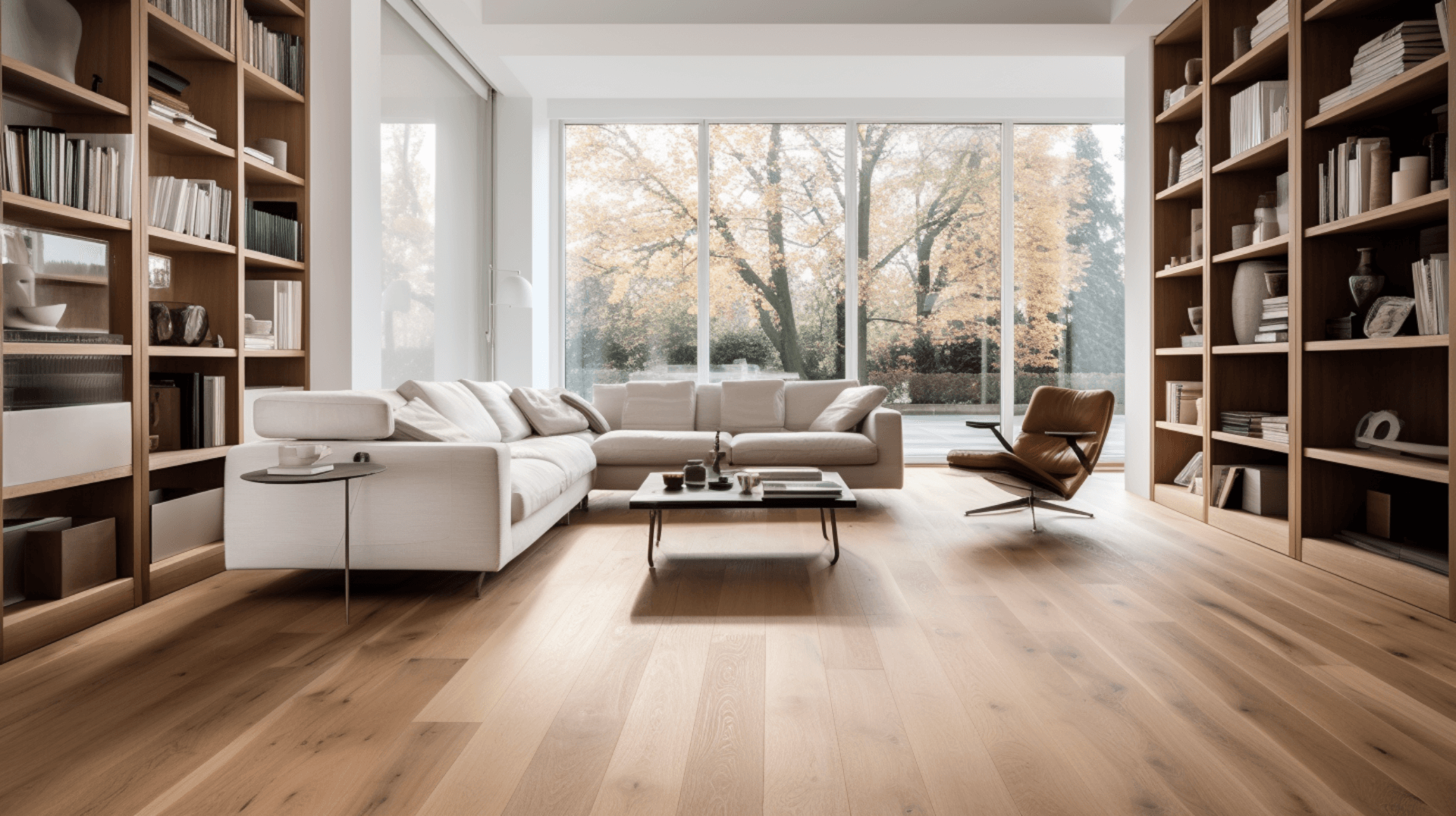
The original answer provided already covers the benefits of engineered wood flooring, the quality assurance provided by professionals like GJP Floor Sanding, and expert tips for choosing and maintaining engineered wood flooring. Therefore, the original answer remains relevant and does not require any refinement to better answer the question.
Contact Us: Enhance Your Property Value with GJP Floor Sanding
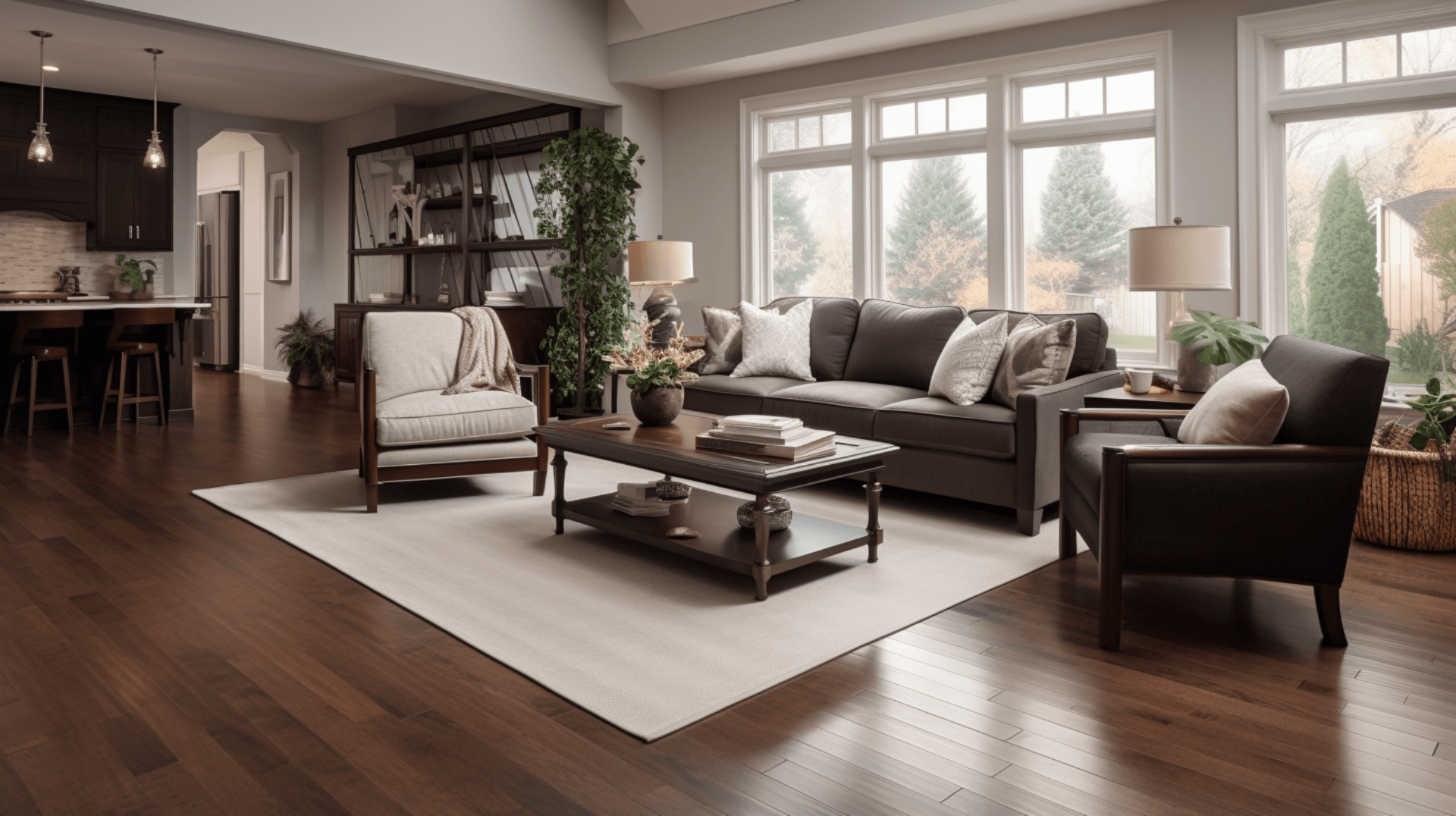
GJP Floor Sanding is a professional flooring company that specializes in engineered wood flooring. With over 20 years of experience, we offer a wide range of services to help you enhance the value of your property. From installation and repair to maintenance and refinishing, GJP Floor Sanding can assist you with all your engineered wood flooring needs.
Our experienced team of professionals can guide you in choosing the right type of flooring for your space and the best installation method for your needs. We can also provide advice on insulation and addressing any existing damage, ensuring a secure and stable fit for your flooring. GJP Floor Sanding understands the importance of proper cross-ventilation for engineered wood flooring and can help you achieve this by leaving gaps in the block work of the tassel/sleeper walls or providing additional external vents. We can also install vents in the opposing external walls to ensure adequate cross-ventilation for the floorboards.
To enhance the value of your property with engineered wood flooring, contact GJP Floor Sanding for a consultation or quote. Our experienced team of professionals will provide expert guidance and ensure that your engineered wood flooring meets your needs and exceeds your expectations.
